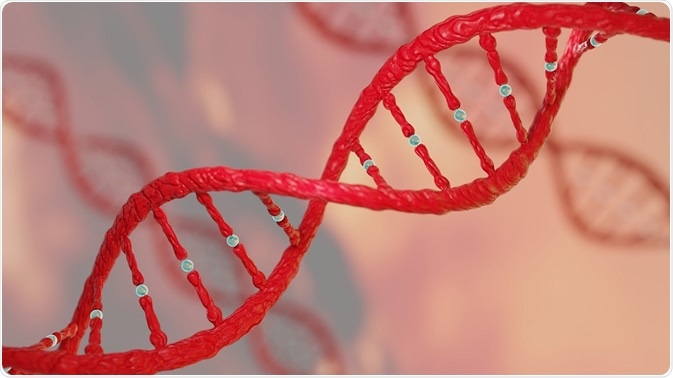Gene knockout is a molecular biology method used to study the function of genes by removing the gene and observing the effects on the cell or organism.
 Image Credit: CI Photos/Shutterstock.com
Image Credit: CI Photos/Shutterstock.com
It can be accomplished by deleting the gene completely, introducing mutations into the gene, suppressing expression of the gene, or editing the gene in the mature organism.
Gene knockout by mutation
Gene knockout by mutation is commonly carried out in bacteria. An early instance of the use of this technique in Escherichia coli was published in 1989 by Hamilton, et al. In this experiment, two sequential recombinations were used to delete the gene.
This work established the feasibility of removing or replacing a functional gene in bacteria. That method has since been developed for other organisms, particularly research animals, like mice.
Knockout mice are commonly used to study genes with human equivalents that may have significance for disease.
A recent example of a study using knockout mice is an investigation of the roles of Xirp proteins in Sudden Unexplained Nocturnal Death Syndrome (SUNDS) and Brugada Syndrome in the Chinese Han Population by Cheng, et al.
The researchers screened Xirp genes in people with the two syndromes, and identified two gene variants that may be pathogenic. Using Xirp2 knockout mice, they learned that mouse hearts without Xirp2 had a number of abnormalities.
This study allowed the identification of Xirp variants that are likely to play a role in SUNDS and Brugada syndrome, and reveal the role of Xirp2 in cardiac function.
Gene silencing
Gene silencing or RNA interference (RNAi) is a newer technology that has become popular for gene knockout studies. In RNAi, small interfering RNA (siRNA) or short hairpin RNA (shRNA) are used to inactivate messenger RNA for a specific gene.
This effectively suppresses expression of the gene. Gene silencing using RNAi has been used to target oncogenes like Bcl-2 and p53, as well as genes implicated in neurological disease, hereditary disorders, and viral infections.
Conditional knockout
Knockout methods using gene deletion have been powerful for studying genes that are not involved in early development. However, those genes that are active during early development can generally not be knocked out without lethal effect to the organism.
Conditional knockout is a way to get around this. The original conditional knockout method made use of a site-specific recombinase called Cre that recombines short target sequences known as LoxP. Other recombinases have since been developed and used for conditional knockout studies.
Combining two of the previous methods, Kuhn, et al. describe a method in a 2010 paper for inducing gene silencing in mice using Cre recombinase or doxycycline to control expression of short hairpin RNA (shRNA). The method resulted in reproducible production of knockdown mice.
Gene editing
Gene editing systems like zinc finger nucleases (ZFNs), transcription activator-like effector nucleases (TALENs), and clustered regularly interspaced short palindromic repeat (CRISPR), are an emerging alternative to site-specific recombinases.
These enzymes have begun to replace many foundational methods in molecular biology such as cloning. Conditional gene knockout is another example where they have some advantages over the original tools.
Further Reading
Last Updated: Feb 2, 2021